On this page
What is geothermal energy?
Around the globe, temperature increases with depth, typically by 10–50ºC/km. The bulk of this heat is derived from the Earth’s mantle and is residual heat left over from Earth’s formation 4.6 billion years ago. A significant amount of heat is also generated via the radioactive decay of naturally occurring potassium, thorium and uranium isotopes present in both the mantle and the Earth’s crust. In the past exploitation of geothermal energy, particularly for electricity production, has been limited to geological settings such as tectonic boundaries and active volcanic areas where localised magmatic heat sources and associated hydrothermal activity including geysers and hot springs occur. At present geothermal energy is used for electricity generation and direct use applications in over 45 countries, including the western USA, Japan and New Zealand.
Although Australia is not currently volcanically active, the continent has potentially vast geothermal energy resources which fall into two general categories – Engineered Geothermal Systems (EGS or Hot Rock) and hydrothermal resources from relatively hot groundwater (also known as Hot Sedimentary Aquifers).
The centre of the Earth is hot and largely composed of molten and semi-molten rock (Fig. 1). This heat is the result of a few different processes including: left over heat from the formation of the planet; the gravitational pressure of the Earth itself, and the radiogenic decay of various elements in the mantle and crust. Convection of the molten interior (the mantle) is the main driver of tectonic plate movement. Heat flows from the mantle into the base of the crust and then via conduction to the surface where it is lost to space.
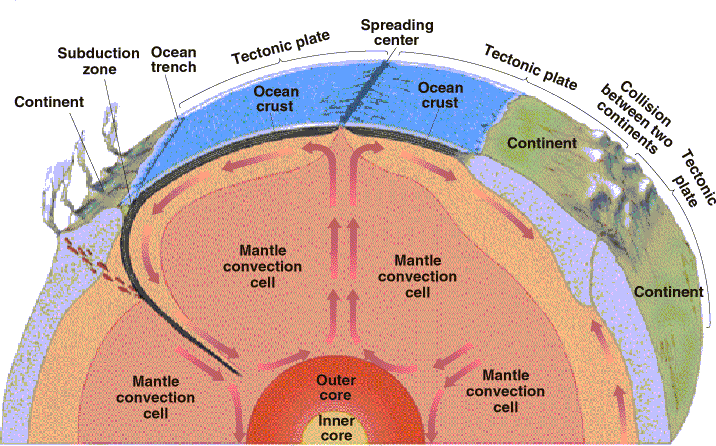
Fig 1. Mantle convection may be the main driver behind plate tectonics. Courtesy University of Sydney.
Because heat is constantly flowing outward from the Earth’s centre, temperature increases with depth into the crust everywhere. But in some places it gets hotter shallower because molten rock (magma) is very close to the Earth’s surface, such as along the edges of tectonic plates and Mid Ocean Ridges for example (Fig. 2). New crust is constantly being created at the ridges and consumed along the margins, resulting in magma being emplaced close to the Earth’s surface and heating the rocks above and around it.
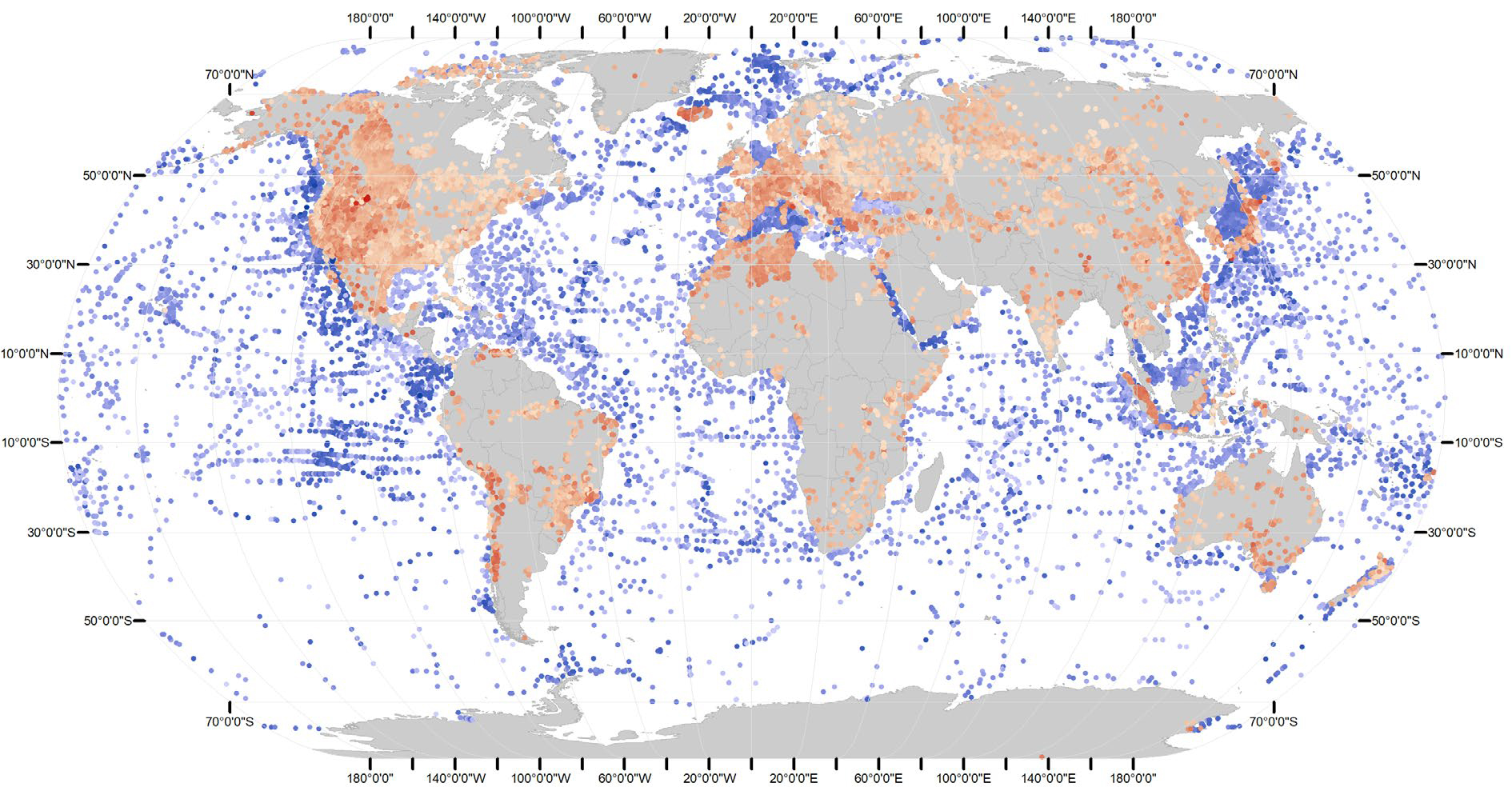
Fig 2. World heat flow map. Courtesy International Heat Flow Commission.
Uses of geothermal energy
Throughout history people have used this heat as a source of energy and put it to work for them. The Ancient Greeks, Romans, Native Americans, Maori, Japanese and Chinese have all used natural hot springs and steaming ground for health, cooking, food preservation and heating buildings.
There have been 3 main uses of geothermal energy: Direct Use, Ground Source Heat Pumps (GSHP) and Electricity Generation. Global Net Zero strategies have seen new uses of geothermal energy emerge over the last decade (Fig. 3).
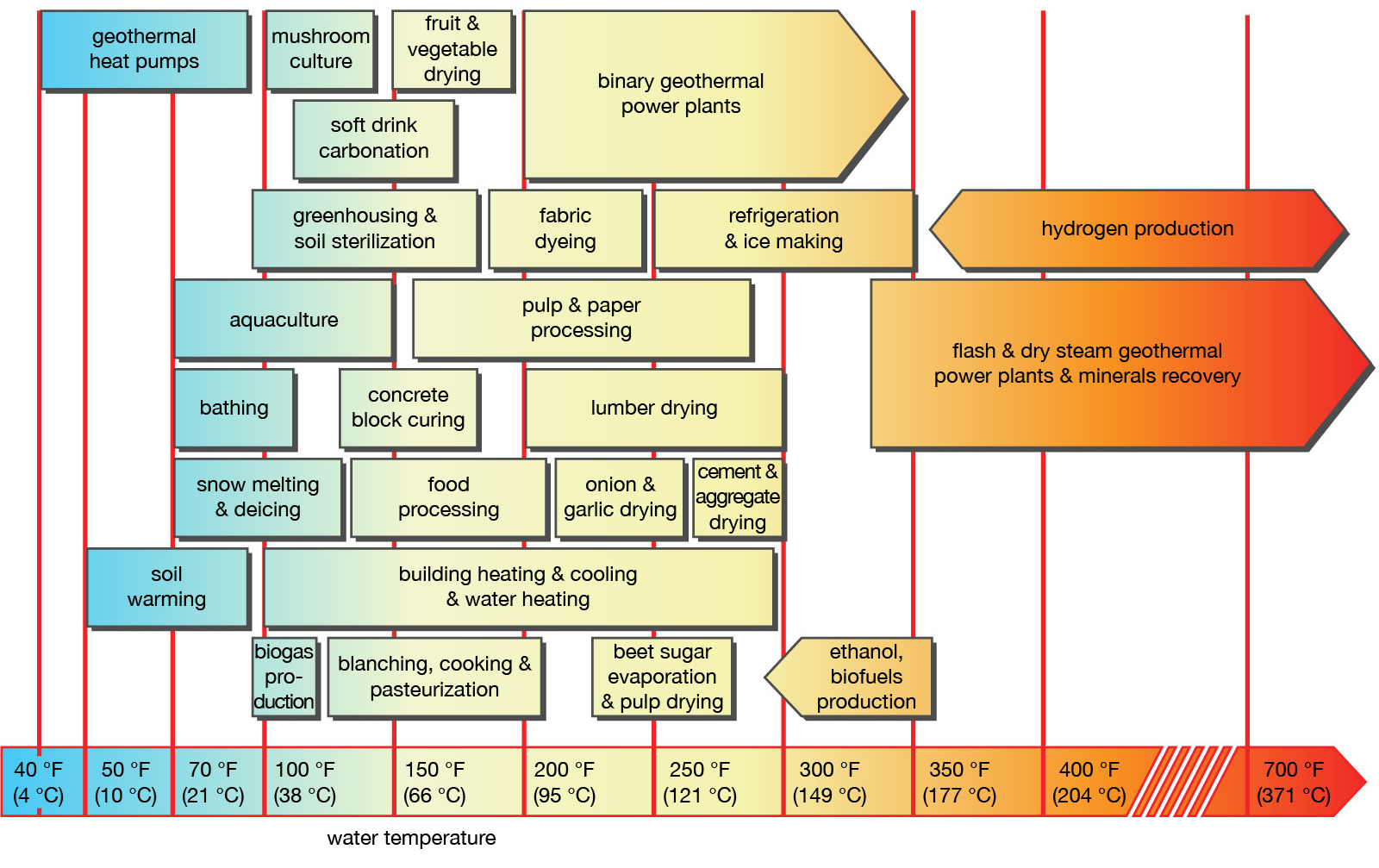
Fig 3. Geothermal energy uses. Courtesy Geothermal Education Office, Tiburon, California, USA
Direct Use
Globally geothermal energy supplies >100,000 MWth for direct use applications. This is where the heat is used directly for some industrial purpose, and is not converted to electricity first. There is a huge range of industrial applications where low grade heat between about 50ºC and 150ºC is needed, and these temperatures are usually occur within 2-3 km of the Earth’s surface. Often quite shallow groundwater systems will be within this useable temperature range.
Low temperature geothermal fluids and steam have been used for heating swimming pools, health spas, food processing, greenhouses, aquaculture, desalination, timber and paper processing, refrigeration, equipment sterilisation, milk pasteurisation, and a host of other industrial uses where heat rather than electricity is needed. A future innovation is the use geothermal energy to produce green hydrogen for industrial uses and transport fuel.
The single biggest direct use of geothermal energy is in heating and cooling buildings. It can be used to heat single buildings or entire districts. One of the best known district geothermal heating systems is in Paris, France.
Current world use of geothermal energy for direct use applications is over 107,000 MWth and more than 283,000 GWh per year (Lund and Toth, 2020). It is a widely present but under-used resource.
Ground Source Heat Pumps (GSHP)
Ground Source Heat Pumps take advantage of the relatively stable temperature conditions that occur within the top couple of hundred metres of the ground surface to heat and cool buildings (Fig. 4). The system is made up of an underground heat exchanger - which is basically a buried loop of pipes - and a pump. The pipes are buried to a depth where the ambient temperature is between about 5ºC and 30ºC, but most systems are quite shallow – about 6 metres deep - where the ground is usually around 10ºC to 16ºC. Heat from the ground warms the fluid in the pipes, which is pumped to surface where it is used in standard HVAC systems to heat the air in the building. In summer, the system is reversed to cool the building, the fluid in the pipes draws heat from the building and dissipates the heat into the ground. A by-product of GSHP is the production of hot water for domestic use.
GSHP are a passive system and very efficient using between 25-50% less electricity than air source heat pumps and conventional air conditioning systems and are also less polluting, with between 44% to 72% less greenhouse gas emissions (US DOE, 2020; Hanova and Dowlatabadi, 2007).
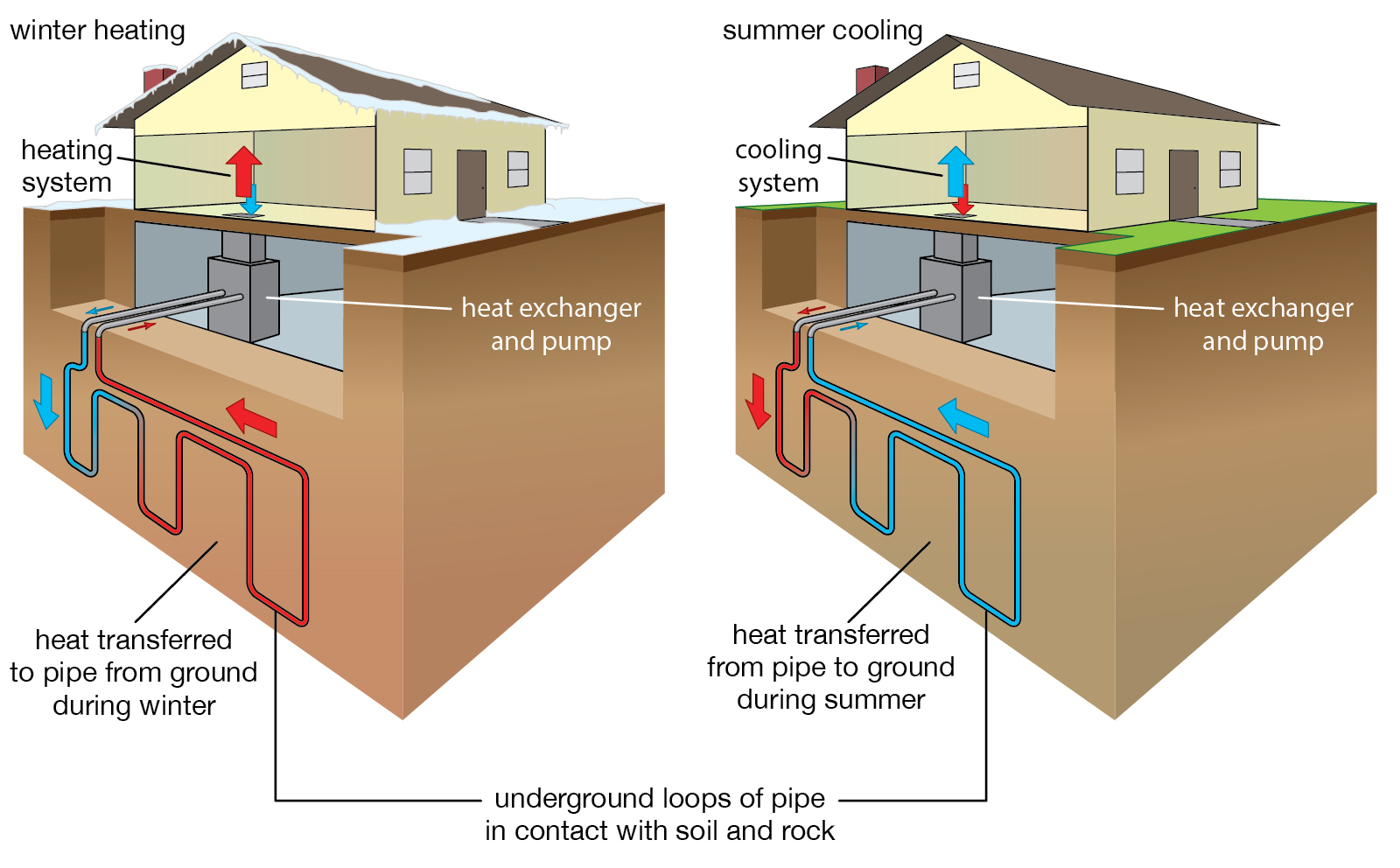
Fig 4. Residential heat pump diagram. Courtesy Encyclopaedia Britannica, Inc (2012)
GSHP are very widely used throughout North America, Europe and east Asia particularly Japan and Korea, where cooling of buildings is a significant energy demand. This is well proven mature technology, which can be applied to single buildings or larger developments and can be retro-fitted to existing buildings.
Electricity Generation
Geothermal energy also has characteristics that make it attractive for generating electricity. Its biggest advantage is that it is truly a baseload energy source. The Earth never stops generating heat and so geothermal electricity can be generated 24/7. Geothermal plants generally have a very high capacity factor which means they are very reliable, modern plants utilising well flow control can ramp up and down over minutes to maintain grid stability. Geothermal energy is a sustainable and renewable resource. If properly managed this type of resource can be reliably used for decades.
The first Geothermal electricity plant was built at Larderello, Italy in 1914 and the Larderello field is still in production with a total net capacity of 769 MW. Wairakei, New Zealand (352 MWe) and The Geysers, USA, celebrated their 50th Anniversaries in 2010 and are still producing. The Geysers is also the world’s largest geothermal electricity generator with an installed capacity of over 2000 MW.
Geothermal electricity is low emission and low polluting. The main waste products are hot water, silica and calcite. Hot water extracted from the geothermal reservoir for use in the power plant, is usually reinjected back into the reservoir and recycled through a closed loop system.
Geothermal electricity generation has a small footprint compared to large scale wind or solar arrays (Fig. 5), particularly when you consider that the fuel source is co-located with the power plant – e.g. the McGinness Hills Geothermal Plant in Nevada generates 1MW per acre (0.4 ha), solar PV requires ~10 times the area to generate 1 MW depending on latitude, panel efficiency season (Boden, 2023).
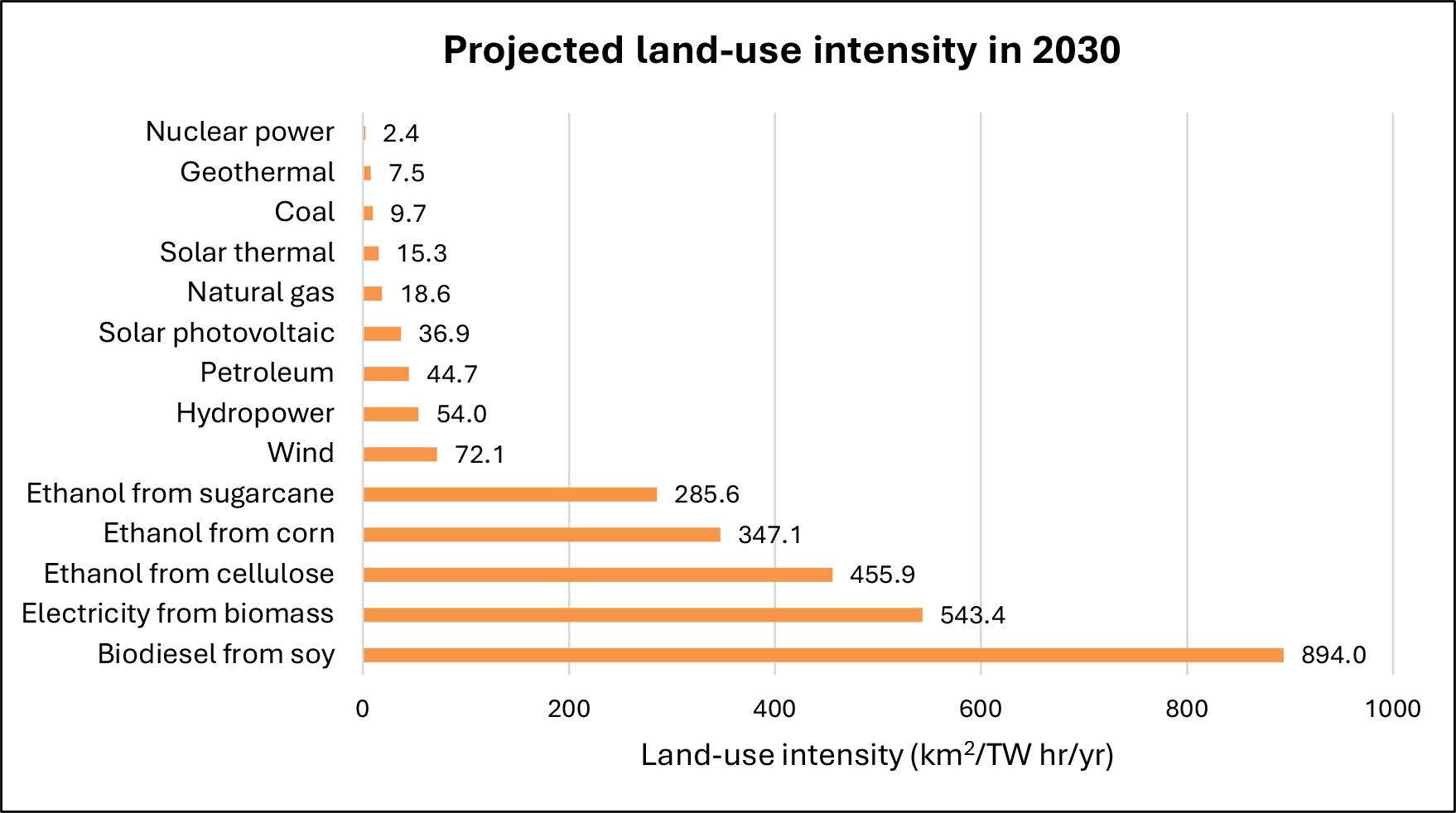
Fig 5. Electricity production land use intensity - includes footprints of the generation plant and land impacted by energy extraction. Geothermal has the second smallest footprint. Adapted from Hibbard et al. (2014).
Challenges
Geothermal energy is typically more expensive than generating electricity using coal, natural gas or intermittent renewables. Until the emergence of Advanced Geothermal Systems (AGS), geothermal energy use has been restricted to regions with heat sources such as volcanoes. Enhanced Geothermal Systems (EGS) require expensive deep drilling and completions under high temperature and pressure conditions with significant geological uncertainties – the risk of induced seismicity has to be carefully managed as does the risk of cooling the reservoir over time. EGS also requires large volumes of water.
Types of geothermal resources
Volcanogenic systems
World-wide about 30 nations currently generate electricity from geothermal energy and most of this production uses relatively shallow, very high temperature and high permeability geothermal resources related to active volcanicity. Although these resources are geographically discrete, only about 6-7 % of the total known global potential for this type of geothermal resource is currently used, so there is scope for geothermal generation from these resources to expand (IEA GIA, 2019; Huttrer, 2020).
Hot Sedimentary Aquifer (Hydrothermal) Systems (HSA)
Even away from volcanic areas there is still a huge amount of heat energy beneath our feet waiting to be accessed, particularly in South Australia where there’s no active volcanism. Electricity can be generated from geothermal resources with temperatures as low as 95ºC but commercial viability of any given project is contingent on the temperature and permeability of the resource. These two factors largely control the resource’s productivity.
Hot Sedimentary Aquifer (HSA) or hydrothermal resources are geographically more common than conventional volcanogenic resources. HSA are generally deeply buried, fluid filled sandstone or limestone reservoirs with relatively high porosity and permeability. Groundwater within a deeply buried aquifer will be at the same temperature as the surrounding rock. If the local geothermal gradient is moderately high, then the ambient rock temperature will be between 100ºC to 150ºC at depths between 2 and 3 km and so will any fluid present in the pore spaces. These temperatures are ideal for direct use applications and for electricity generation using Organic Rankine Cycle binary plants.
Many of the HSA resources investigated in Australia have been identified through historical oil and gas drilling. Viable HSA resources require a heat source, a permeable reservoir and a seal (as per oil and gas targets), groundwater and a recharge mechanism. Until recently, Australia’s only commercial geothermal electricity was generated in Birdsville, using 98ºC hot water from a bore into the Great Artesian Basin. The Celsius 1 well drilled in the South Australia Cooper Basin region in 2011 tested another HSA play in the Great Artesian Basin. HSA plays were also the focus of exploration in the SA Otway Basin between 2006-2010 with 5 shallow heat flow wells and one deep well, Salamander 1 (total depth ~4000m), drilled to test the concept.
Engineered Geothermal Systems (EGS)
As a rule of thumb, the average geothermal gradient is about 30ºC/km, so to reach temperatures above 200ºC needed for steam flash power generation, boreholes would need to be drilled to about 6 -7 km deep. At these depths, rocks are generally hard, abrasive, and impermeable metamorphic or igneous rocks. However there are areas where high heat production from crustal rocks locally increases the geothermal gradient. This additional heat is produced from rocks with higher than average content of the radiogenic elements Potassium (K) Uranium (U) and Thorium (Th). These elements are present everywhere and are constantly releasing thermal energy as they undergo radioactive decay over time. Most rock types contain some K, U, Th but granites tend to be the rocks most enriched in these elements. Even in granites, the amounts of these elements are very small, but when the volume of rock is extensive (cubic kilometres) the amount of heat produced is significant. The average continental heat flow is about 60 – 80 mW/m2 but there are local areas throughout Australia for example, with heat flow approaches 120mW/m2 or more, due to the presence of buried high heat producing granite bodies.
The fundamental process of electricity generation from EGS is the same as a volcanogenic or HSA system. Water is pumped from surface down an injection well, flows through a network of fractures throughout the hot granite rock, which heats the water in an ‘open loop’ system. The heated water is then brought to surface through a second producer well and used to generate electricity. The main point of difference is the need to artificially enhance permeability in the reservoir (Fig. 6).
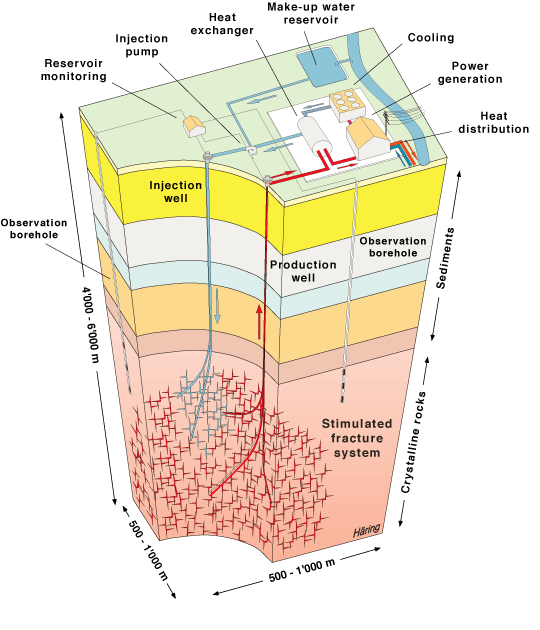
Fig 6. A detailed view of an Engineered Geothermal System (EGS). Courtesy Greenrock Energy.
The ideal reservoir resembles a large network of small interconnected fractures which permeates the rock mass – similar to the thousands of tiny tubules which make up the radiator of a car. This acts as a huge surface area throughout the rock able to exchange heat with the transporting water. In EGS permeability of the reservoir is increased using a technique called hydraulic stimulation to extend and enhance existing fractures in the rock.
EGS have tremendous potential but commercial and technical challenges exist. The technology is advancing quickly but not yet at a point where these systems can be routinely deployed everywhere with commercial success. Significant leaps in technology are needed to be able drill deep into hard rock while controlling the well, and then engineer the subsurface heat exchanger to optimal permeability. Most of this technology development is adapted from the petroleum industry. There are however many hybrid HSA - EGS projects operational, particularly in Germany, which demonstrate that the technology works. In February 2023, the US Government announced USD $74 million of funding for pilot projects to test EGS efficacy and scalability in a range of geological settings.
Repurposing oil/gas wells
Reconfiguring accessible oil and gas wells (both producing and suspended wells) to co-produce hydrocarbons and geothermally heated water is another potential source of geothermal energy. In South Australia, the Cooper and Otway Basins would be obvious places to test this technology.
Next-generation geothermal energy
Advances over the last two decades have seen new geothermal technologies and applications emerge in the context of the global drive towards net zero. Next-generation geothermal technologies (e.g. Advanced Geothermal Systems, Fig. 7) has the potential to open up geothermal energy resources in areas which were regarded as non-prospective for HSA, EGS and volcanogenic geothermal projects.
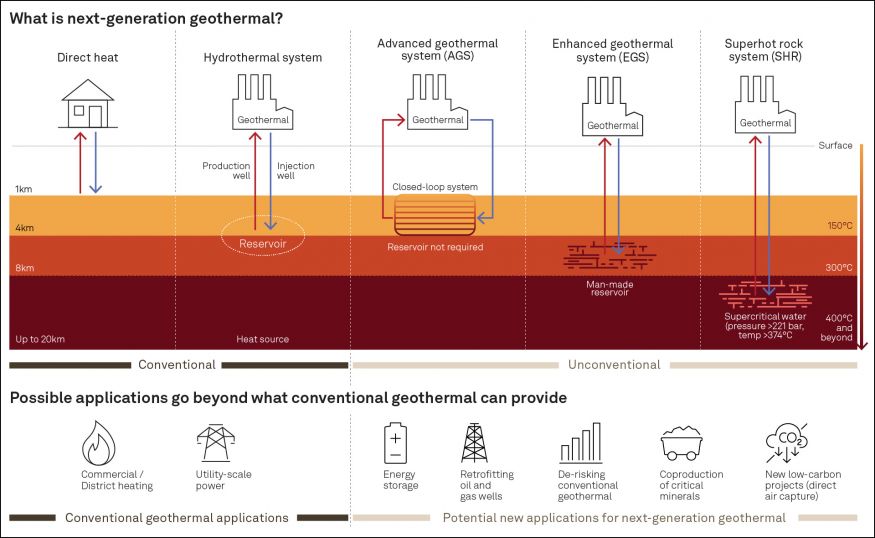 Fig 7. Next-generation geothermal energy. From S&P Commodity Review 1 January 2024.
Fig 7. Next-generation geothermal energy. From S&P Commodity Review 1 January 2024.
Closed-loop geothermal (Advanced Geothermal Systems)
There are significant geological and engineering risks associated with EGS and HSA which have limited the development of deep engineered geothermal projects globally including the costs associated with managing extreme subsurface environments e.g.:
- geofluid corrosion or scaling plus the risk of hazardous minerals in brines (waste management),
- subsurface uncertainties,
- engineering drilling and completions for extreme temperatures and pressures,
- establishing a field of injectors and producing wells,
- fracture stimulating deep crystalline rocks,
- risk of induced seismicity,
- water use,
- decommissioning at end of well life.
An emerging alternative approach which minimises downhole geological and engineering risks and uncertainties is Closed-Loop Geothermal (CLG), also known as Advanced Geothermal Systems (AGS). Wells are drilled and completed as closed loop heat exchangers (e.g. Muir, 2020; Brown and Howell, 2023; Baker Hughes; Greenfire Energy). In a fully sealed closed loop (Fig. 8a), a working fluid (e.g. water or supercritical CO2) is circulated through a sealed downhole heat exchanger to absorb and transport heat. Open systems (Fig. 8b) use formation fluid to directly heat the downhole heat pump.
CLG has the potential to open up plays in basins and basement provinces with a wider range of prospective temperatures and rock types compared to EGS and hydrothermal projects. GEL operators could either retrofit accessible petroleum, mineral exploration, and geothermal wells with CLG equipment or drill new wells designed for CLG systems.
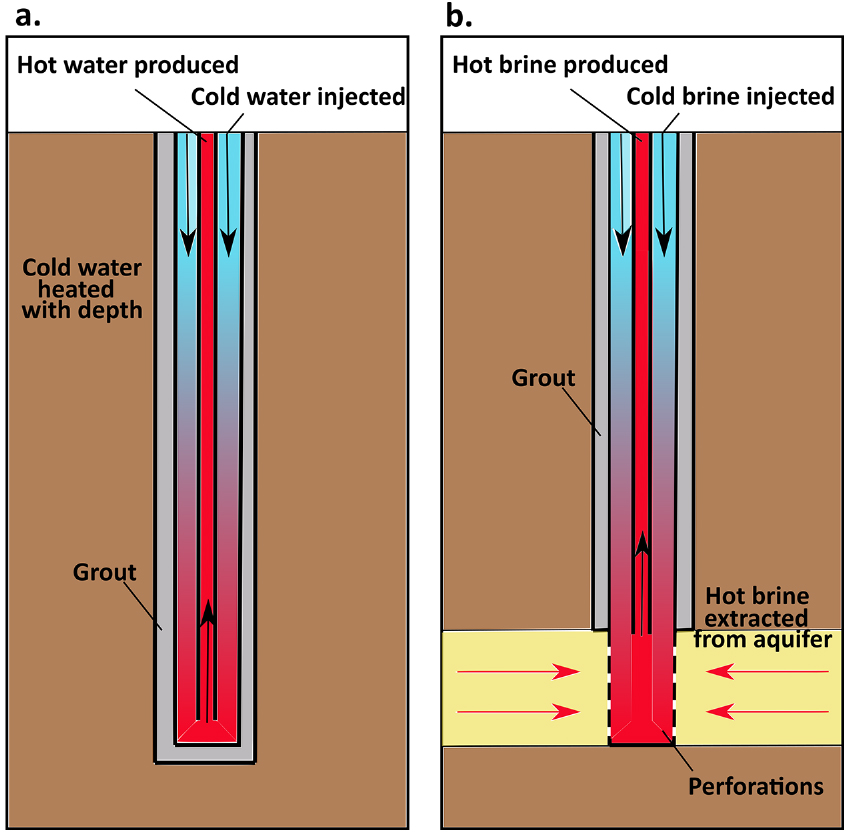
Fig 8. Different types of single well geothermal heat exchanger wells a. is a closed loop system, b. is an open system which utilises geofluids from the reservoir rock (Brown and Howell, 2023).
Prospectivity
South Australia has significant potential for geothermal energy and the State government is leading Australia with an effective regulatory and approvals framework under the Energy Resources Act 2000. The Department for Energy and Mining provides geoscientific and engineering information and data to support industry exploration and development. The Division also has responsibility to ensure compliance with the provisions of relevant legislation.
The majority of current and forecast investment to explore for and demonstrate geothermal energy in South Australia is focused on Engineered Geothermal Systems (EGS) and hydrothermal (Hot Sedimentary Aquifer) resources. A potential new source of geothermal energy is to develop closed loop heat exchangers in well bores.
Geological setting
South Australia is situated between the ancient Archean Shield of Western Australia and the mobile orogenic belts of the eastern states. As a result of this unique tectonic setting, South Australia's rock record extends from late Archaean to Holocene. The State is divided into a number of geological provinces, including Precambrian crustal blocks and younger sedimentary basins, which host a wide variety of mineral, petroleum and geothermal resources.
A viable geothermal prospect needs both rocks that will generate heat, and cover rocks to insulate and trap the produced heat over geologic time. In South Australia, granites buried by sedimentary cover currently form the main geothermal exploration target.
Geothermal energy exploration has typically involved searching under sedimentary cover for granitic bodies likely to have elevated uranium and thorium contents, then drilling these hot basement rocks and/or drilling the basal sedimentary cover (which is also likely to be hot) and testing temperatures. The hot rocks may then be fracture stimulated so that water can be circulated via deep injector wells into the heat source. This heated water is recovered from production wells and circulated to a surface heat exchanger to generate electricity.
Geoscience Australia has used bottom hole temperatures from deep petroleum drillholes in combination with thermal gradient to extrapolate temperatures at 5 km depth across the continent (Fig. 9). The map highlights the zones with anomalously high temperatures in central and NE South Australia (Gerner et al. 2010; Budd et al. 2016, Haynes et al. 2015).

Fig 9. OzTemp – Interpreted Temperature at 5km Depth Image (Gerner and Holgate, 2010).
Geothermal provinces
The Gawler Craton (late Archean-early Mesoproterozoic) and Curnamona Province (Paleo-Mesoproterozoic) are two large complex basement terrains consisting of mafic and felsic igneous intrusions and volcanics, moderate to high grade metamorphics and minor unmetamorphosed sedimentary deposits (Preiss et al, 2002). Mesoproterozoic granites, felsic volcanics and gneisses in the Gawler Craton and Curnamona Province contain anomalously elevated uranium and thorium concentrations relative to global Proterozoic averages (Neumann et al., 2000) and generate high heat flows. For example, the Mesoproterozoic Hiltaba Suite hosts the Olympic Dam copper-gold-uranium deposit.
Currently, regions of interpreted high crustal temperature which have been blanketed by sedimentary cover form the main exploration targets for geothermal energy in South Australia. Neumann et al (2000) defined the South Australian Heat Flow Anomaly (SAHFA) based on sparse regional heat flow data. The SAHFA occurs through the eastern Gawler Craton, Delamerian Fold Belt and Curnamona Province. Average heat flow is elevated relative to Proterozoic or younger terrains on other continents – mean heat flow within the SAHFA is 92±10 µWm-2 compared to an average of 51-54 µWm-2 in other countries (Neumann et al, 2000). The central and northern part of the SAHFA has been covered by Neoproterozoic, Paleozoic, Mesozoic and Tertiary sediments.
As well as ‘hot’ granites, Petratherm Ltd have identified that radiogenic iron oxide deposits also occur in the SAHFA (eg Olympic Dam, Prominent Hill) and may have even higher heat flow than the granites, although over a smaller volume of rock. Petratherm are also exploring enhanced natural thermal systems around Paralana Hot Springs and the associated fracture zone.
At Paralana Hot Springs in the central SAHFA, naturally occurring faults and fracture systems have provided migration pathways for hot (>60°C) groundwater to reach the surface. Petratherm predict high heat production rocks at depth. The maximum heat flow measured within the SAHFA, 126 µWm-2 (Neumann et al, 2000) occurs at Parabarana Hill, ~30km northeast of the Paralana Hot Springs, on the Paralana Fault Zone.
Younger (Cambro-Ordovician) granites and granitoids occur in the Delamerian Fold Belt, which lies on the east of the SAHFA. Many of these granites occur at depth and have been covered by the Murray and Otway Basins, however heat production data are limited.
In the State’s northeast, Mid-Carboniferous granite (Big Lake Suite) has been covered by the Cooper, Eromanga and Lake Eyre basins. While this granite has lower heat production when compared to older Mesoproterozoic Gawler Craton and Curnamona Province granites, it is blanketed by over 3 km of insulating Late Carboniferous-Recent sandstone, siltstone, shale and coal. This has effectively trapped heat generated from the granite, and temperatures of 250°C occur at 4.5 km depth. In this region, Great Artesian Basin groundwater has been heated to 100ºC at depth.
The most recent volcanic activity in South Australia occurred in the south-east ~4–6000 years ago at Mount Gambier and Mount Shank, producing locally elevated heat flows (Neumann et al, 2000).
Insulating cover
The geological record in South Australia has preserved a unique history of sedimentation from the Neoproterozoic to Ordovician, and from the Early Devonian to Holocene. In the context of geothermal energy, these basins form insulating cover over heat sources in crystalline basement, or form potential circulation systems or reservoirs for hot water.
The Cooper Basin and Eromanga Basin form important insulators for the Big Lake Suite granites in the Nappamerri Trough. The Eromanga Basin, and the Otway Basin, are also being explored in their own right as sources of geothermally heated water. Other insulating basins include the Cenozoic Murray Basin, Cambrian Arrowie Basin, Tertiary basins north of Adelaide and the Neoproterozoic sediments of the Adelaide Geosyncline.
Regional sediment thickness data for Australian basins can be obtained from OZ SEEBASE©, which was developed by FrOG Tech in Australia and provides a free GIS model of the geological evolution of both Phanerozoic and Proterozoic Basins. Both the Phanerozoic and Proterozoic Basins products are Public Domain and are available for download or as hardcopy.
Engineered Geothermal Systems (EGS)
Geoscience Australia’s preliminary work suggests Australia’s EGS potential between the shallowest depth corresponding to a minimum temperature of 150ºC and a maximum depth of 5000 m is roughly 1.2 billion PJ (roughly 20 000 years of Australia’s primary energy use in 2005), without taking into account the renewable characteristics of EGS resources.
South Australia has large regions of interpreted high crustal heat flow associated with buried high heat producing granite intrusives at depths >3 km, and these form key exploration targets for EGS. In deeper parts of the Cooper Basin, for example, geothermal gradients reach 55–60ºC/km which is significantly higher than the average geothermal gradient of about 25–30ºC/km. Other potential geothermal energy targets include hydrothermal energy from the Great Artesian Basin in north-eastern South Australia and the Otway Basin in the State’s south-east.
A viable EGS geothermal prospect needs both basement rocks that will generate heat at depth, and cover rocks to insulate and trap the produced heat over geologic time – for example the thick Permian coal measures in the Cooper Basin. A subsurface water circulation system needs to be successfully established either through the hot basement rocks or in the overlying hot cover rocks. Other important considerations are the availability and sustainable management of groundwater resources to accumulate and transfer the heat, and the proximity to electricity transmission infrastructure and/or local markets for electricity or direct use applications (e.g. mines like Olympic Dam and potentially Prominent Hill, the Moomba Plant, and regional centres).
To identify geothermal exploration targets in South Australia, companies have used publicly available geological and heat flow data as well as reports on petroleum and mineral exploration wells, seismic, gravity and aeromagnetic data held by DEM. Once identified, targets are drilled to measure heat flow, geothermal gradients and other data, and once a suitably hot resource is confirmed, rocks within the resource area are fracture stimulated using oil field technology to create a network of interconnected fractures. Understanding the character and orientation of both the in-situ stress field and natural fracture systems in the target rocks is critical to optimise development of the fracture network. Geothermal fluid is circulated via injection wells through the fractured hot rock and the heated fluid is recovered from production wells. Hot fluid is then circulated through a surface heat exchanger and used to generate electricity. The cooled geothermal fluid is then reinjected into the geothermal system and the cycle continues.
Much of central and north-eastern South Australia is anomalously hot at depth (Fig. 9). Mesoproterozoic granites, felsic volcanics and gneisses in the Gawler Craton and Curnamona Province contain anomalously high uranium and thorium concentrations relative to global Proterozoic averages. This has generated high heat flows, resulting in the South Australian Heat Flow Anomaly (Neumann et al., 2000) where heat flow is substantially elevated relative to Proterozoic or younger terrains on other continents.
In north-eastern South Australia, the mid-Carboniferous Big Lake Suite granite has been blanketed by over 3.5 km of insulating sedimentary cover. While this granite has lower heat production when compared to Mesoproterozoic granites, the thick thermal blanket of coal, sandstone and siltstone has very effectively trapped the heat generated by the granite. Temperatures of 250ºC occur at 4.5 km depth.
Hydrothermal (Hot Sedimentary Aquifers)
Granitic basement covered by stacked sedimentary basins in the Cooper, Eromanga and Lake Eyre basins region has caused temperature anomalies, and groundwater in the Great Artesian Basin has been heated to greater than 100ºC. Geothermal energy from this hot groundwater has already been harnessed on a small scale in both South Australia and Queensland. In South Australia, an experimental 20 kW Organic Rankine Cycle generator was installed at Mulka Bore in 1986 and generated electricity from 85ºC groundwater. At Birdsville, an 80 kW net demonstration plant has been operating since 1999 using 99ºC groundwater from the town water bore.
In the South East, higher temperature outliers occur in the Otway Basin where the most recent volcanic activity at Mt Gambier and Mt Shank has produced locally elevated heat flows. These volcanoes were active as recently as ~4000 years ago (eruptions were witnessed by Aboriginal people), as well as under the Murray Basin. Warm artesian water has been used for aquaculture to farm barramundi near Robe since 1985. In Portland, Victoria, hot groundwater from the Portland Trough (which has elevated geothermal gradients) was used between 1985 and 2006 to heat buildings.
Closed-loop geothermal
Geothermal exploration drilling is expected in GEL work programs. New approaches such as drilling and completing closed-loop geothermal wells can be proposed by GEL operators as part of the Department's licensing and approvals process. Entry to re-engineer accessible existing mineral, petroleum or geothermal wells will be assessed on a case-by-case basis.
Exploration and licensing
Interest was first expressed about geothermal exploration in South Australia by Ashton Energy in 1996, around the Olympic Dam Mine. Other parties expressed interest in exploring the known ‘hot spots’ in the Cooper Basin around the same time. However, licences could not then be granted because there was no available legislative framework.
During extensive stakeholder consultation for the Petroleum Act 2000 which commenced in 1996, parties interested in geothermal provided input. Because the most prospective geothermal area in the state was perceived to be under the Cooper Basin and drilling would involve deep high temperature-high pressure drillholes using petroleum industry technology, it was determined that geothermal exploration licences and activities would be regulated by the new Petroleum Act, rather than the Mining Act 1971 or separate legislation.
The likelihood of future carbon-constrained economies, the need to diversify the State’s energy mix to be transition ready and the recognition of South Australia's vast natural hot rock resources, were drivers to set out a supportive framework to entice investment in exploration and development geothermal energy. The process commenced in South Australia in October 2000 with the release of three geothermal exploration blocks over hot granites underlying the Cooper Basin.
Public domain seismic and drilling data from previous petroleum exploration activity by Delhi Petroleum and the Santos Joint Venture were readily available from DEM and helped to high-grade this region. Bidding closed in February 2001 with applications for all three blocks and the first South Australian Geothermal Exploration Licences (GELs) were granted in October 2001.
A significant milestone for the Australian Geothermal Industry and a major achievement internationally in the progression of Engineered Geothermal System (EGS) technology was the completion and successful trialling of Geodynamics Limited’s Habanero 1MWe Pilot Plant near Innamincka in the north-east of the state. The Pilot Plant was commissioned in 2013 and subsequently trialled over a 160-day period, achieving operational conditions of 19kg/s and 215ºC production wellhead temperature. The plant surpassed expected stability and performance criteria and at the time of trial suspension, production wellhead temperatures were still increasing. The wells have since been de-commissioned as it was not possible to commercialise this isolated energy resource.
Geothermal energy exploration peaked in the state in 2009 when almost 250 GELs were in place (Fig. 10) and 19 wells were drilled (Fig. 11). However, the sector is making a come back, with exploration focussed on discovering energy for proposed green energy plants as mining and renewable energy projects around the state. A diversity of geothermal energy play concepts will be tested by explorers in the State over the next five years.
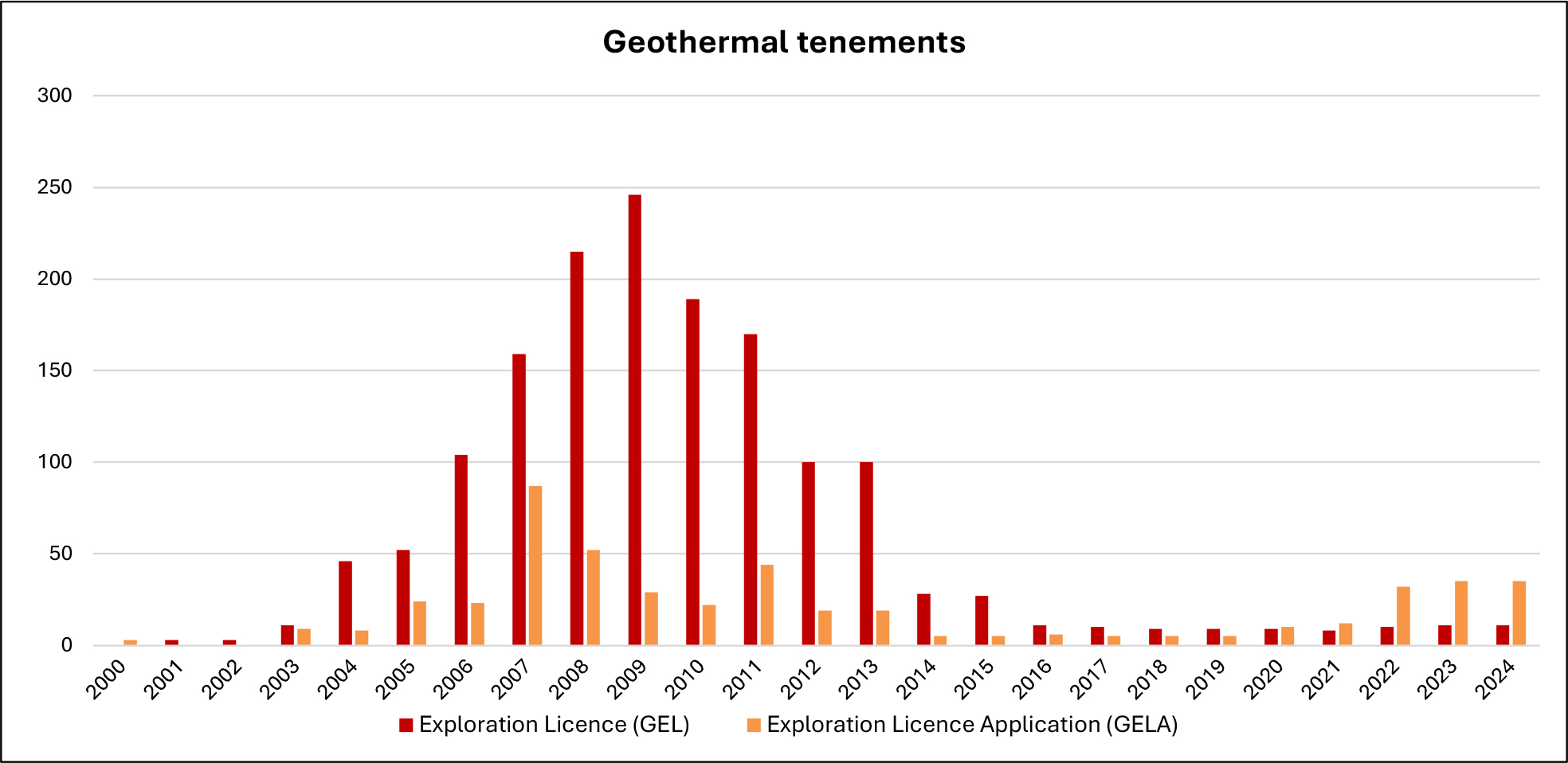
Fig 10. Geothermal licences and applications.
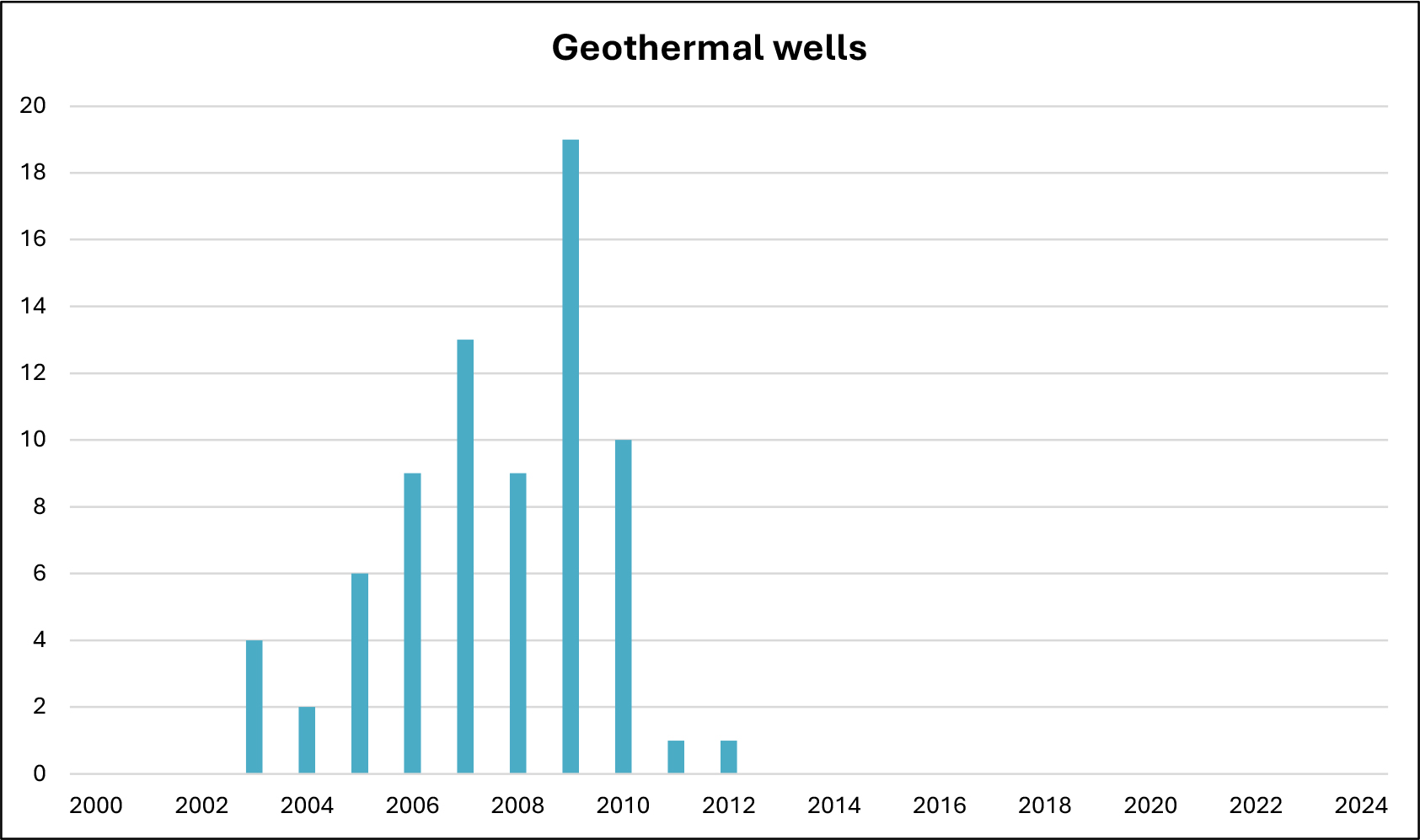
Fig 11. Geothermal drilling in SA
Since August 2004 over-the-counter applications for GELs could be accepted over the entire state, except over current GELs or lands excluded for exploration (e.g. certain parks). Because geothermal exploration is not regarded by the Government of South Australia as mining under the Commonwealth Native Title Act 1993, the right to negotiate process is not required. The average turn-around from lodging a GEL application (GELA) with DEM to grant of licence is roughly three months, depending on whether parks and/or compatible licences are involved.
New competitive tender regions came into force on 10 November 2022 which apply to all three categories of exploration licences under the Energy Resources Act 2000; petroleum, geothermal and gas storage. Explorers and geophysical companies (service companies) have the option to nominate release areas where there is vacant acreage in these regions.
Further information on licensing:
- Current geothermal licence map (PDF)
- Details of licences and operators
- Licence documents are viewable via the Licence Register
References
Alexander, E.M., 2004. Geothermal energy exploration in South Australia. MESA Journal 34: 4-6.
ARENA (Australian Renewable Energy Agency) 2014. Looking forward: barriers, risks and rewards of the Australian Geothermal Sector to 2020 and 2030.
Australian Geothermal Reporting Code Committee (AGRCC) 2010. The Australian Geothermal Reporting Code, Second Edition.
Bendall, B, Love, D., Hough, P., Malavazos, M., Long, A. and Pepicelli, D., 2012. Toward Understanding Induced Seismicity. Proceedings 37th Workshop on Geothermal Reservoir Engineering, Stanford University, California, January 30 – February 1, 2012.
Bendall, B, Hogarth, R., Holl, H., McMahon, A., Larking, A. and Reid, P., 2014. Australian Experiences in EGS Permeability Enhancement – A review of 3 Case Studies. Proceedings 39th Workshop on Geothermal Reservoir Engineering, Stanford University, California, February 24 – 26, 2014.
Bendall, B, Huddlestone-Holmes, C. and Goldstein, B., 2013. The Current Status of Geothermal Projects in Australia – A National Review. Proceedings 38th Workshop on Geothermal Reservoir Engineering, Stanford University, California, February 11 – 13, 2013.
Brown, C.S. and Howell, L. 2023. Unlocking deep geothermal energy in the UK using borehole heat exchangers. Geology Today, Vol. 39 (2), pp 67-71.
Budd, A.R., F.L.Holgate, E.Gerner and B.A.Ayling, 2008. Pre-Competitive Geoscience for Geothermal Exploration and Development in Australia: Geoscience Australia’s Onshore Energy Security Program and the Geothermal Energy Project. Geothermal Resources Council Transactions, Vol. 32, pp 347-350.
Gerner, E.J., Holgate, F.L. and Budd, A.R., 2010. OZTEMP: An Updated Map and Database for Predicting Temperature at Five Kilometres Depth in Australia. GRC Transactions, 34, 345-346.
Gerner, E.J., Holgate, F.L, 2010. OZTemp Well Temperature Data. Geoscience Australia Dataset.
Hand, M., Bedrikovetski, P.,Huddlestone-Holmes, C., Badalyan, A., You, Z., Brautigan, D., Dillinger, A., Carageorgos, T., Abul Khair, H.F., Bendall, B. and Matthews, C., 2015. Case study: Reservoir Quality in Sedimentary Geothermal Settings in Australia. Proceedings 40th Workshop on Geothermal Reservoir Engineering, Stanford University, California, January 26-28, 2015.
Hanova, J., and Dowlatabadi, H, 2007. Strategic GHG reduction through the use of ground source heat pump technology. Environ. Res. Lett. 2 (2007) 044001 (8pp).
Haynes, M.W., Budd, A.R., Gerner, E.J., Harris-Pascal, C. and Kirkby, A.L. 2015. TherMAP – Assessing Subsurface Temperatures in Australia from a Geothermal Systems Perspective. Proceedings World Geothermal Congress 2015 Melbourne, Australia.
Hibbard, K., T. Wilson, K. Averyt, R. Harriss, R. Newmark, S. Rose, E. Shevliakova, and V. Tidwell, 2014: Ch. 10: Energy, Water, and Land Use. Climate Change Impacts in the United States: The Third National Climate Assessment, J. M. Melillo, Terese (T.C.) Richmond, and G. W.Yohe, Eds., U.S. Global Change Research Program, 257-281.
Hillis, R., Hand, M., Mildren, S., Morton, J., Reid, P. and Reynolds, S., 2004. Hot dry rock geothermal exploration in Australia. Application of the in situ stress field to hot dry rock geothermal energy in the Cooper Basin. In: Boult, P.J., Johns, D.R. and Lang, S.C. (Eds), PESA’s Eastern Australasian Basin Symposium II, Adelaide 2004. Petroleum Exploration Society of Australia. Special Publication, pp. 413-721.
Holdgate, F. and Chopra, P., 2004. New temperature maps of the Australian crust. Preview, 109:24-25. Huddlestone-Holmes, C. and Gerner, E., (eds) 2012. Proceedings of the 2012 Australian Geothermal Energy Conference. Record 2012/73. Geoscience Australia: Canberra.
Hunt, S.P. and Morelli, 2006. Cooper Basin HDR hazard evaluation: Predictive modelling of local stress changes due to HFR geothermal energy operations in South Australia. DEM RB 2006/00016, unpublished.
Huttrer, G.W., 2020. Geothermal Power Generation in the World 2015-2020 Update Report. Proceedings World Geothermal Congress, 2020, Reykjavik Iceland April 26 – May 2, 2020.
IEA GIA (International Energy Agency Geothermal Implementing Agreement). Annual Geothermal Trend Reports.
Koncuro, G. B. 2014. Fluid-rock interaction studies on an enhanced geothermal system Cooper Basin, South Australia. University of Adelaide PhD Thesis.
Lund, J.W. and Toth, A.N. (2020). Direct Utilization of Geothermal Energy 2020 Worldwide review. Proceedings World Geothermal Congress, 2020, Reykjavik Iceland April 26 – May 2, 2020.
Muir, J.M.,2020. New Opportunities and Applications for Closed-Loop Geothermal Energy Systems. Geothermal Rising Bulletin (49)4.
Neumann, N., Sandiford, M. and Foden, J., 2000. Regional geochemistry and continental heat flow; implications for the origin of the South Australian heat flow anomaly. Earth and Planetary Science Letters, 183:107-120.
Preiss, WV, Alexander, EM, Cowley, WM and Schwarz, MP 2000. Towards defining South Australia's geological provinces and sedimentary basins. MESA Journal, 27, 39–52.
Reynolds, S.D., Mildren, S.D., Hillis, R.R. and Meyer, J.J., 2004. Application of the in situ stress field to hot dry rock geothermal energy in the Cooper Basin. In: Boult, P.J., Johns, D.R. and Lang, S.C. (Eds), PESA’s Eastern Australasian Basin Symposium II, Adelaide 2004. Petroleum Exploration Society of Australia. Special Publication, pp. 431-440.
RPS Aquaterra and Hot Dry Rocks, 2012. Geothermal Energy and Water Use: Requirements and Potential Effects. Waterlines, National Water Commission: Canberra.
US DOE (United States Department of Energy), 2020. Geothermal Heat Pumps. Available online: Geothermal heat pumps | Choosing and installing geothermal heat pumps


